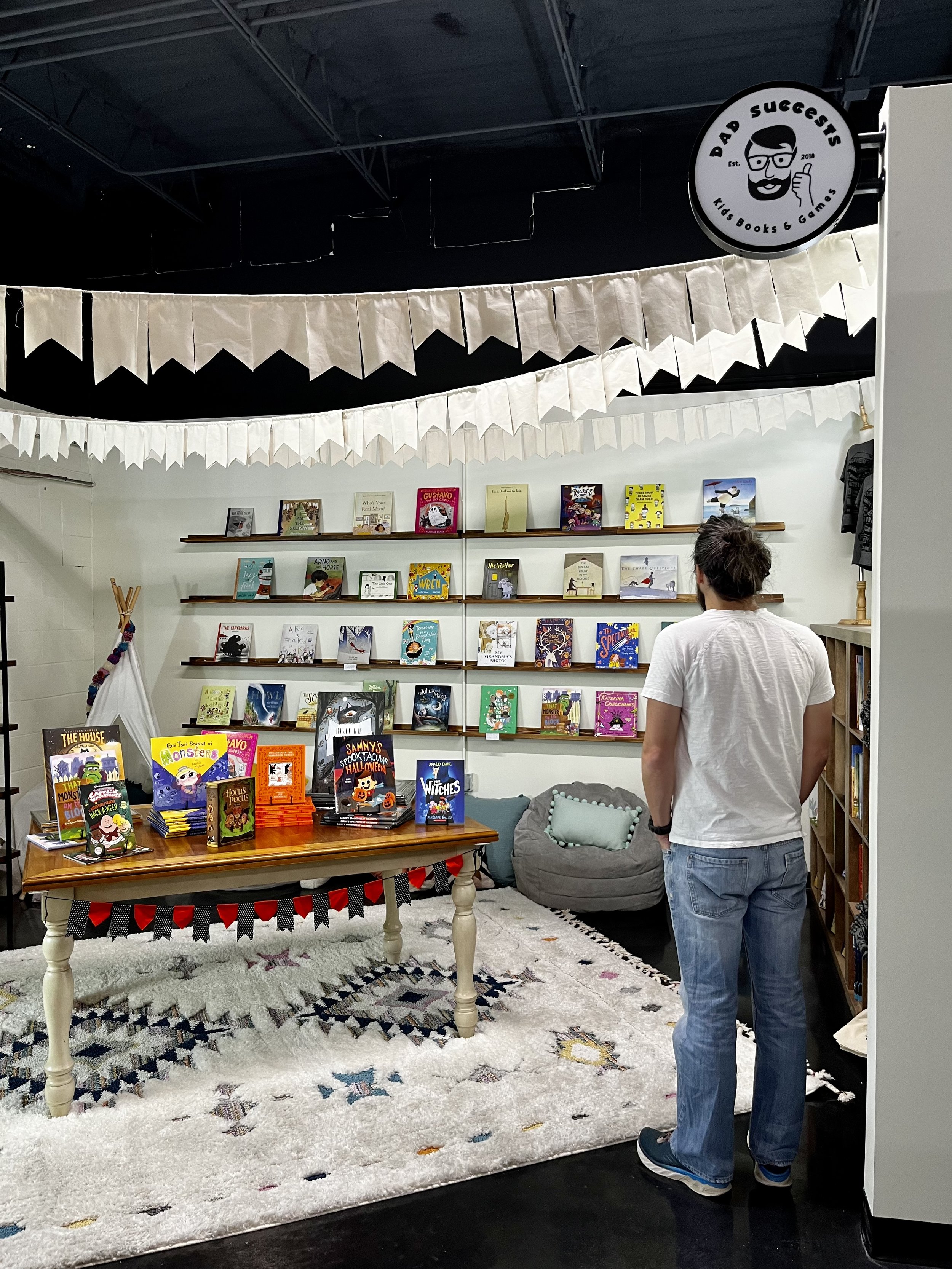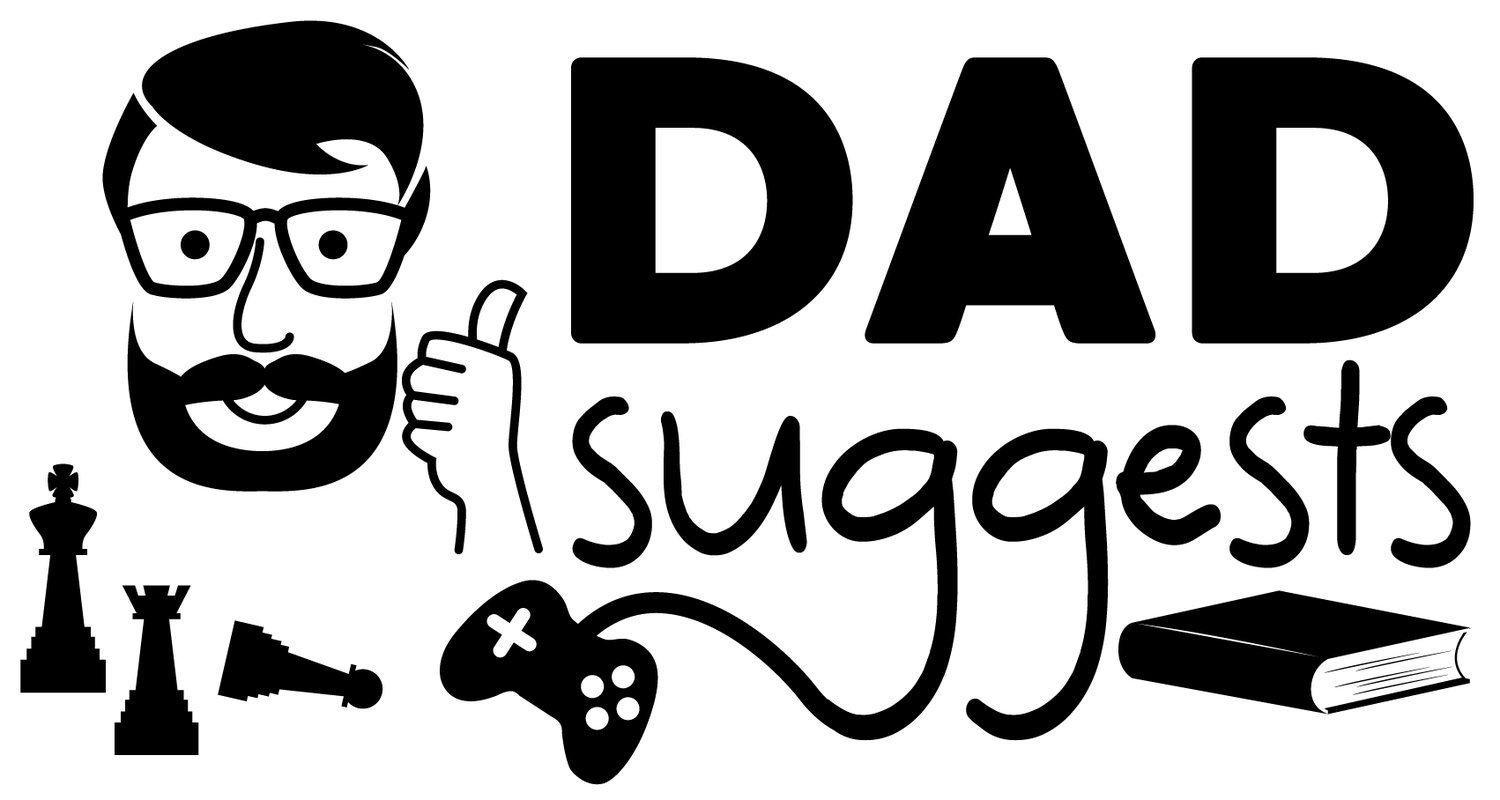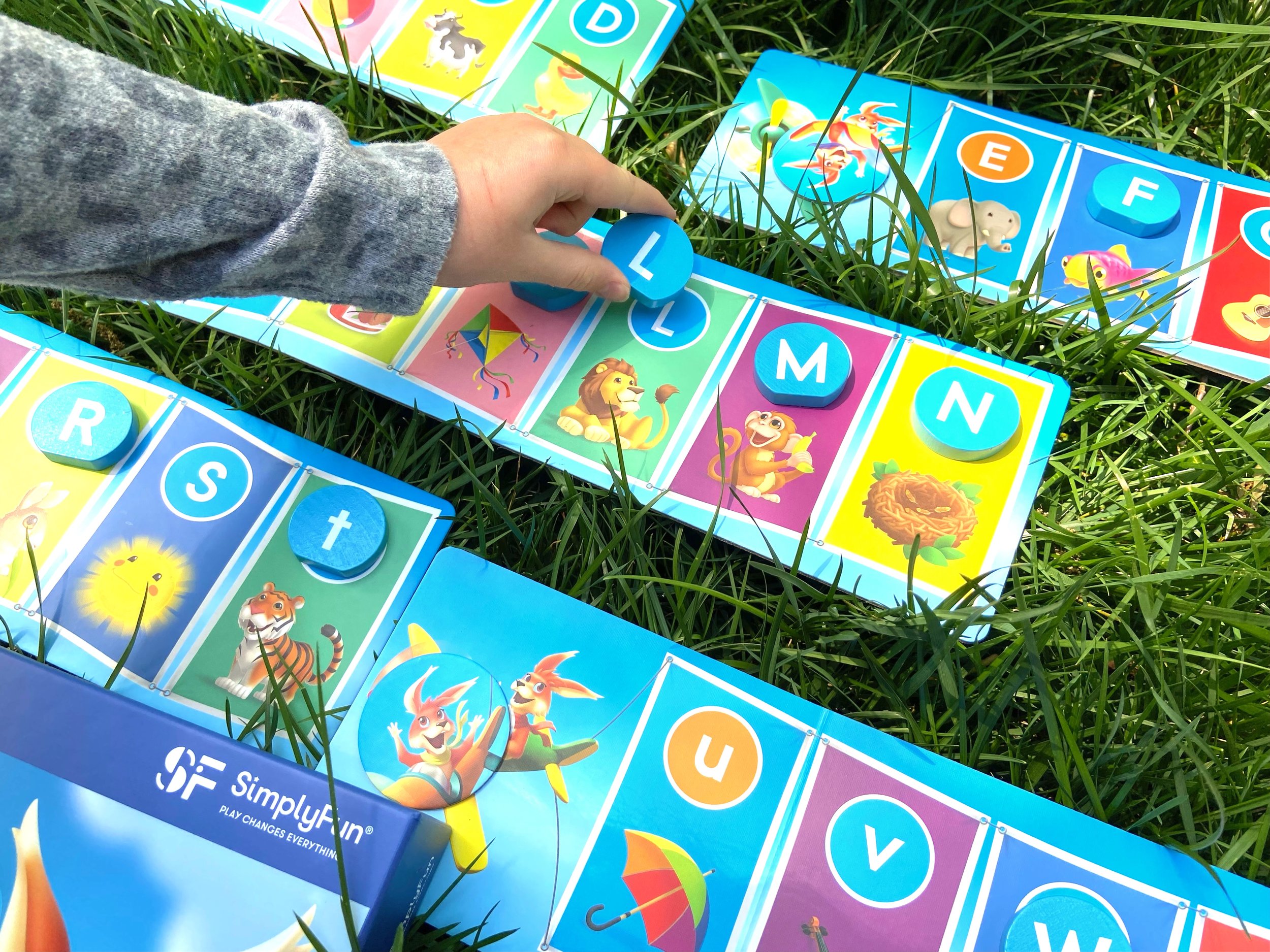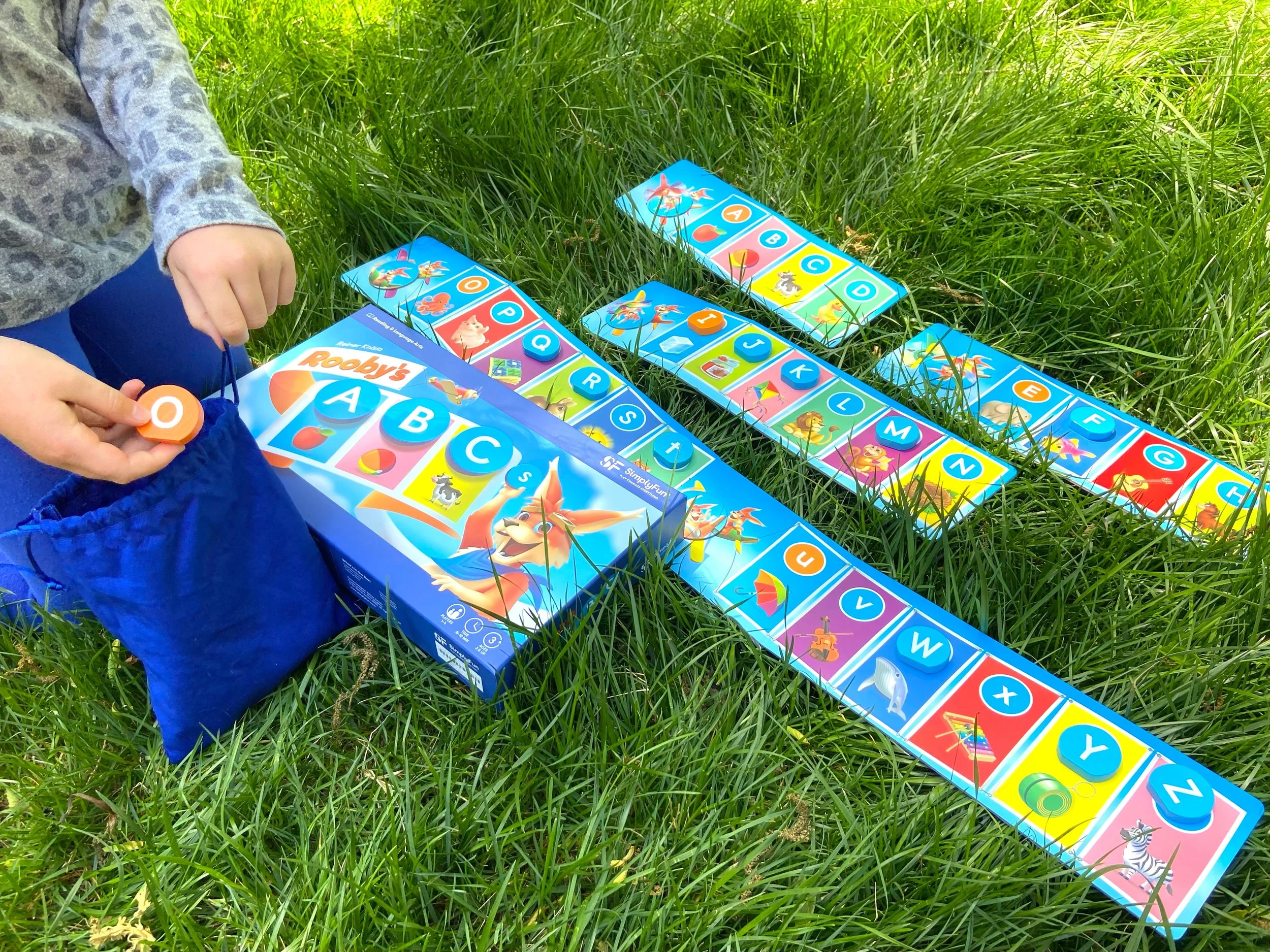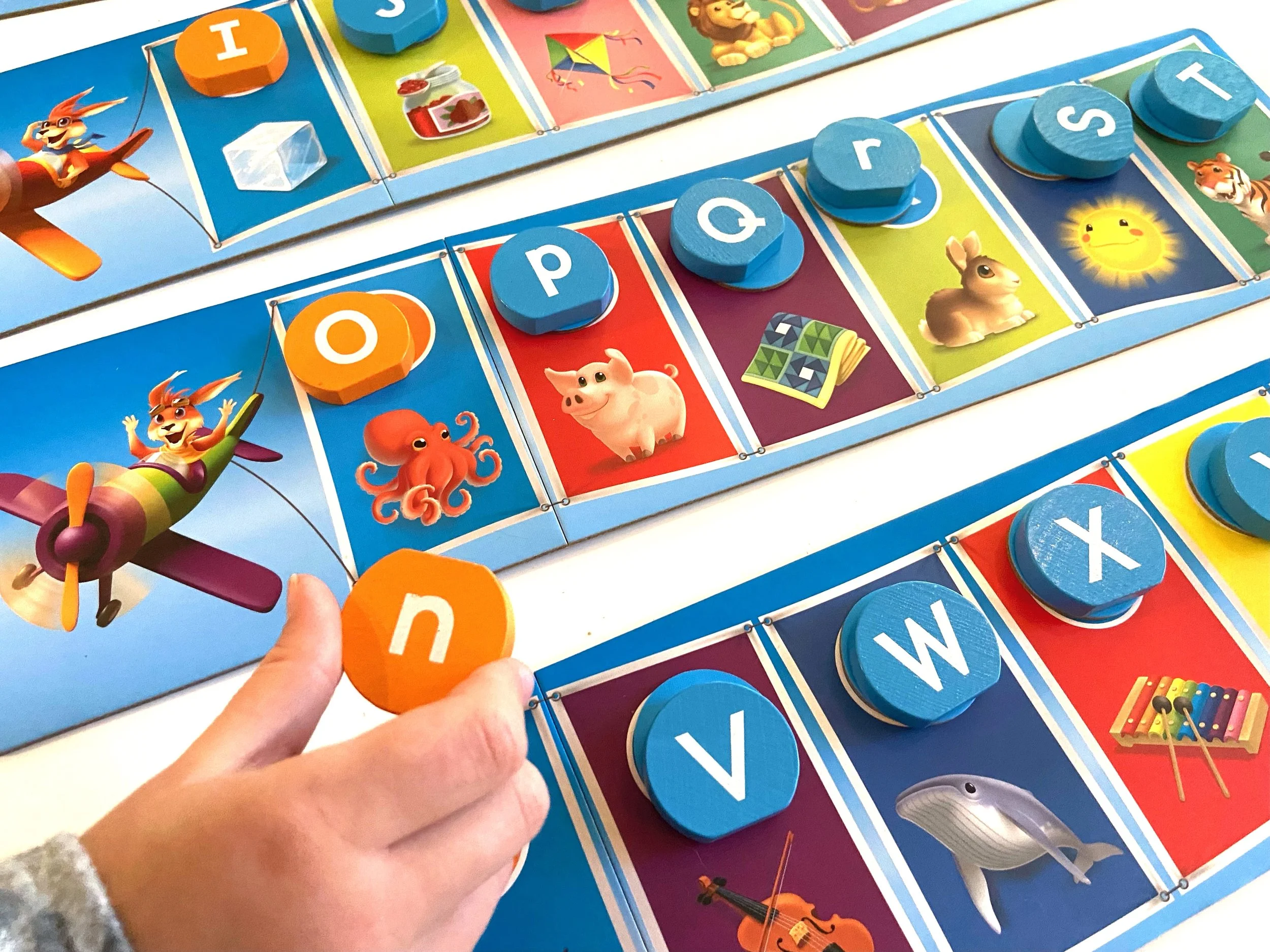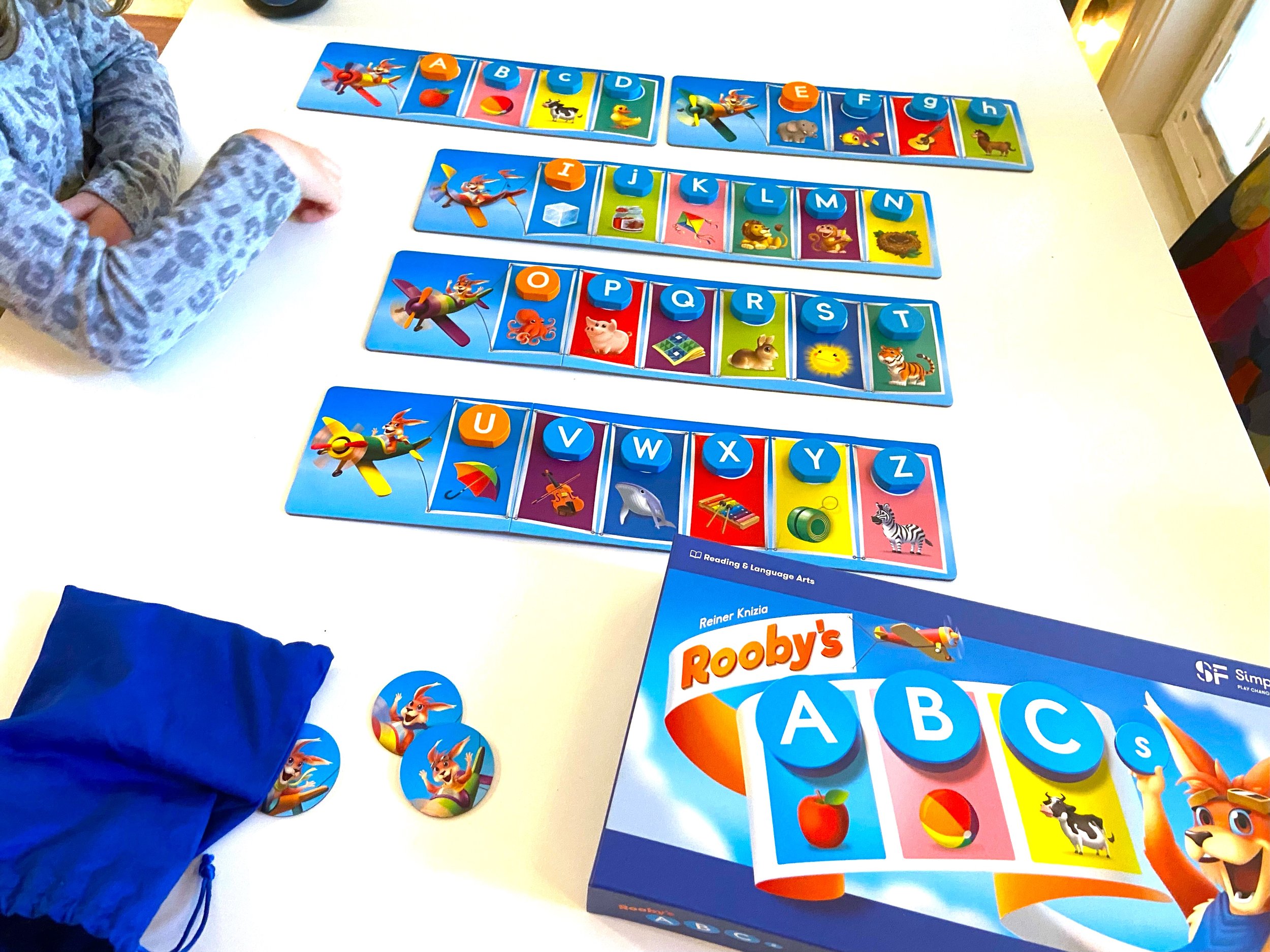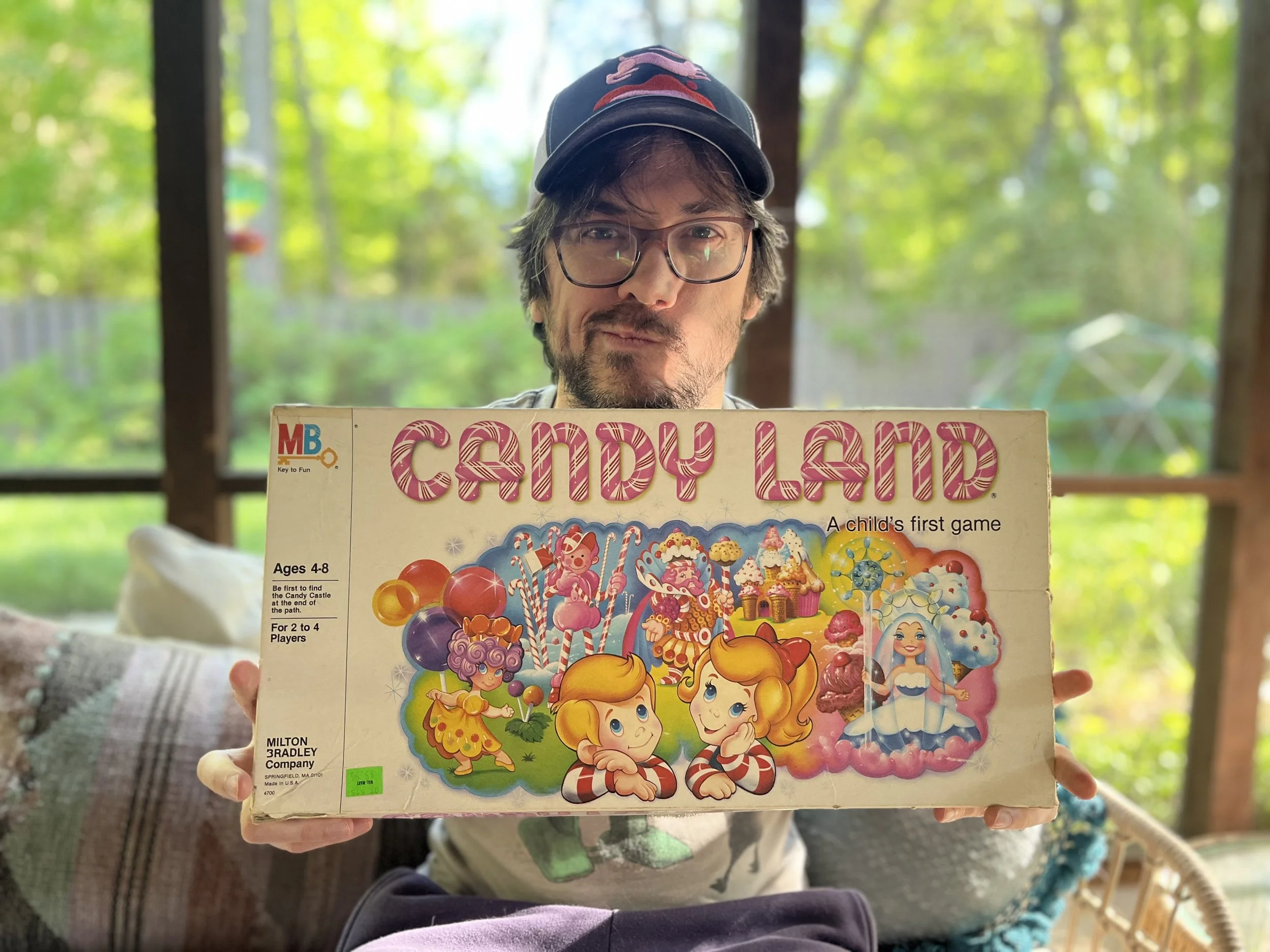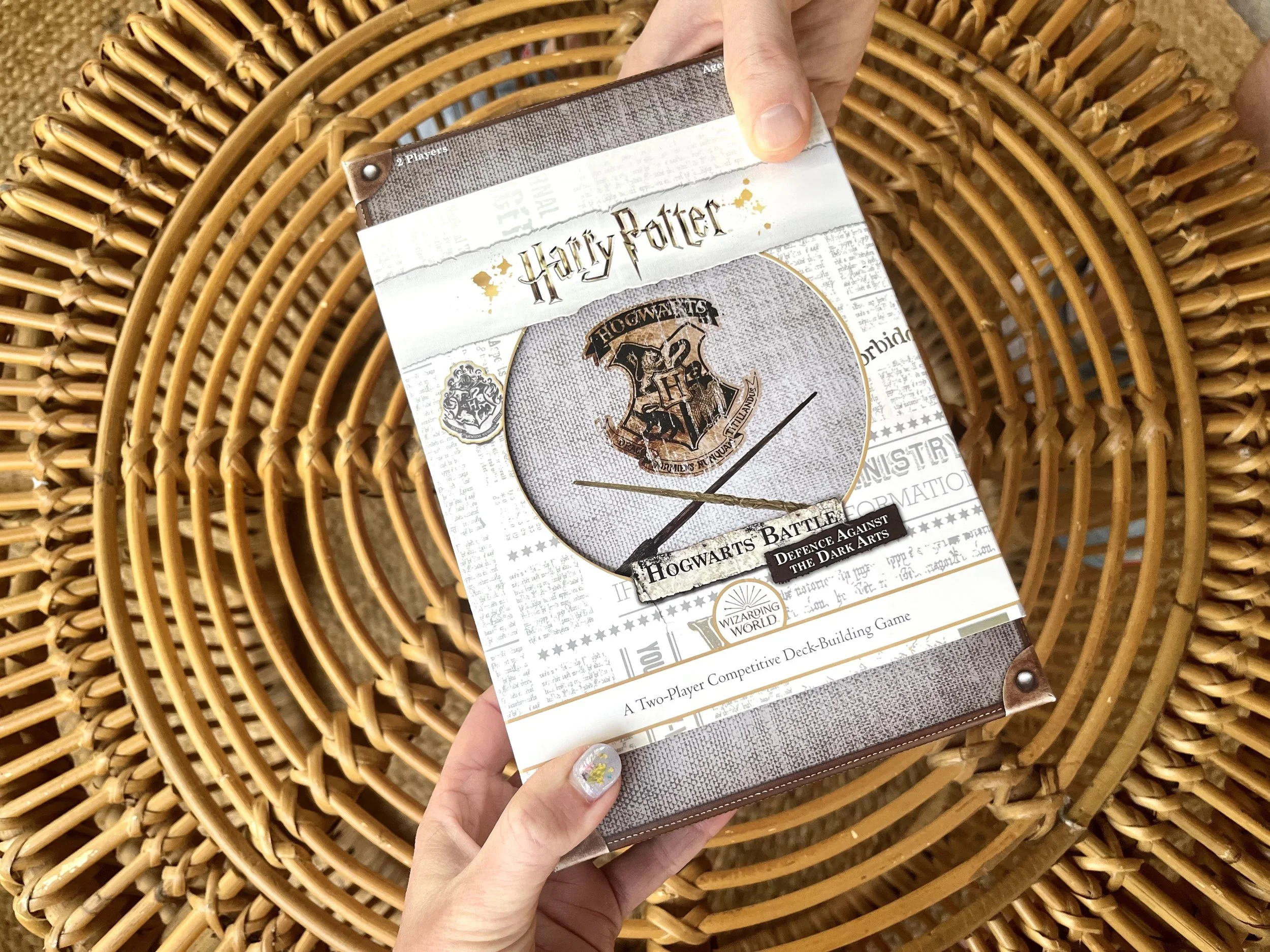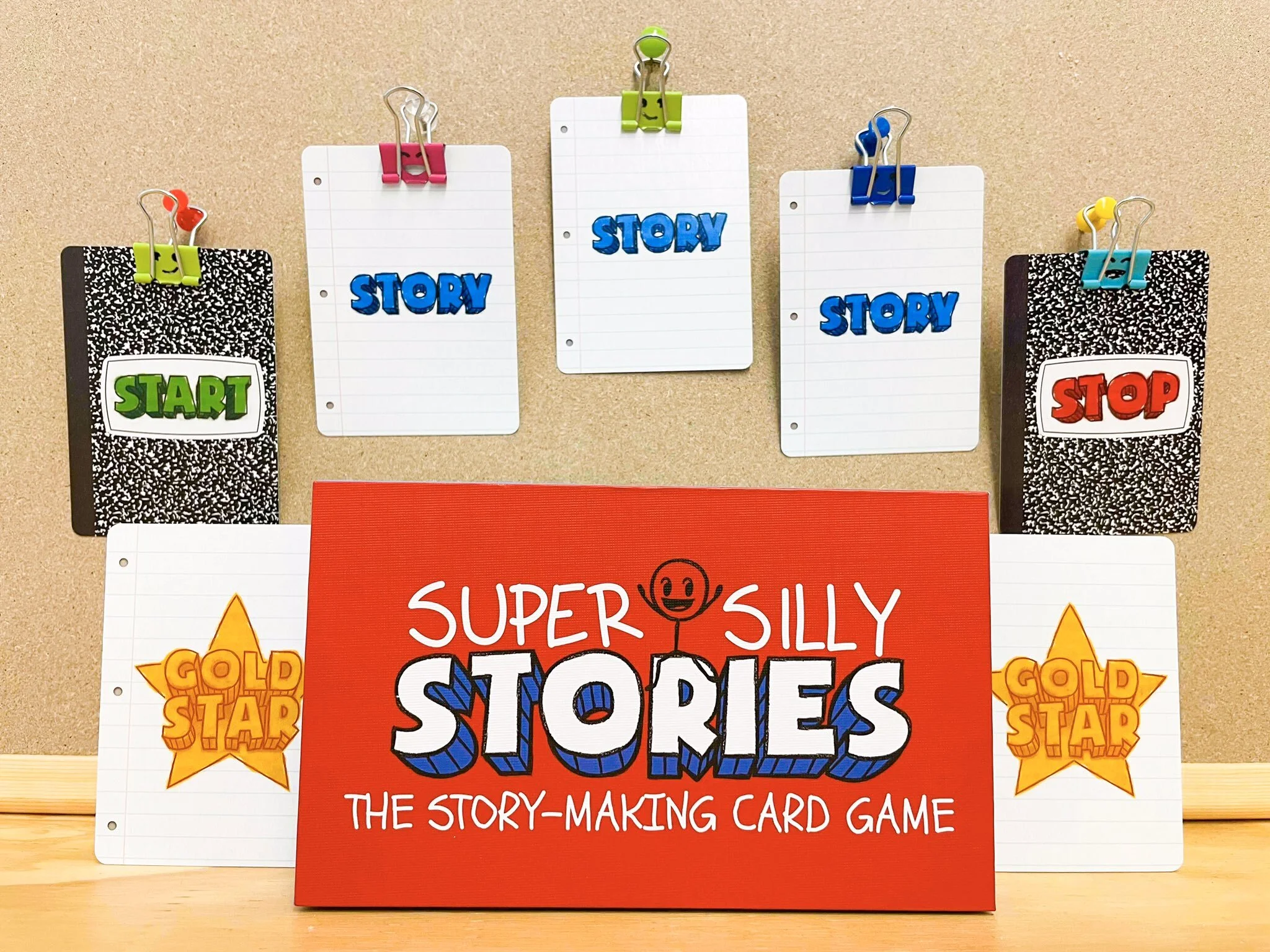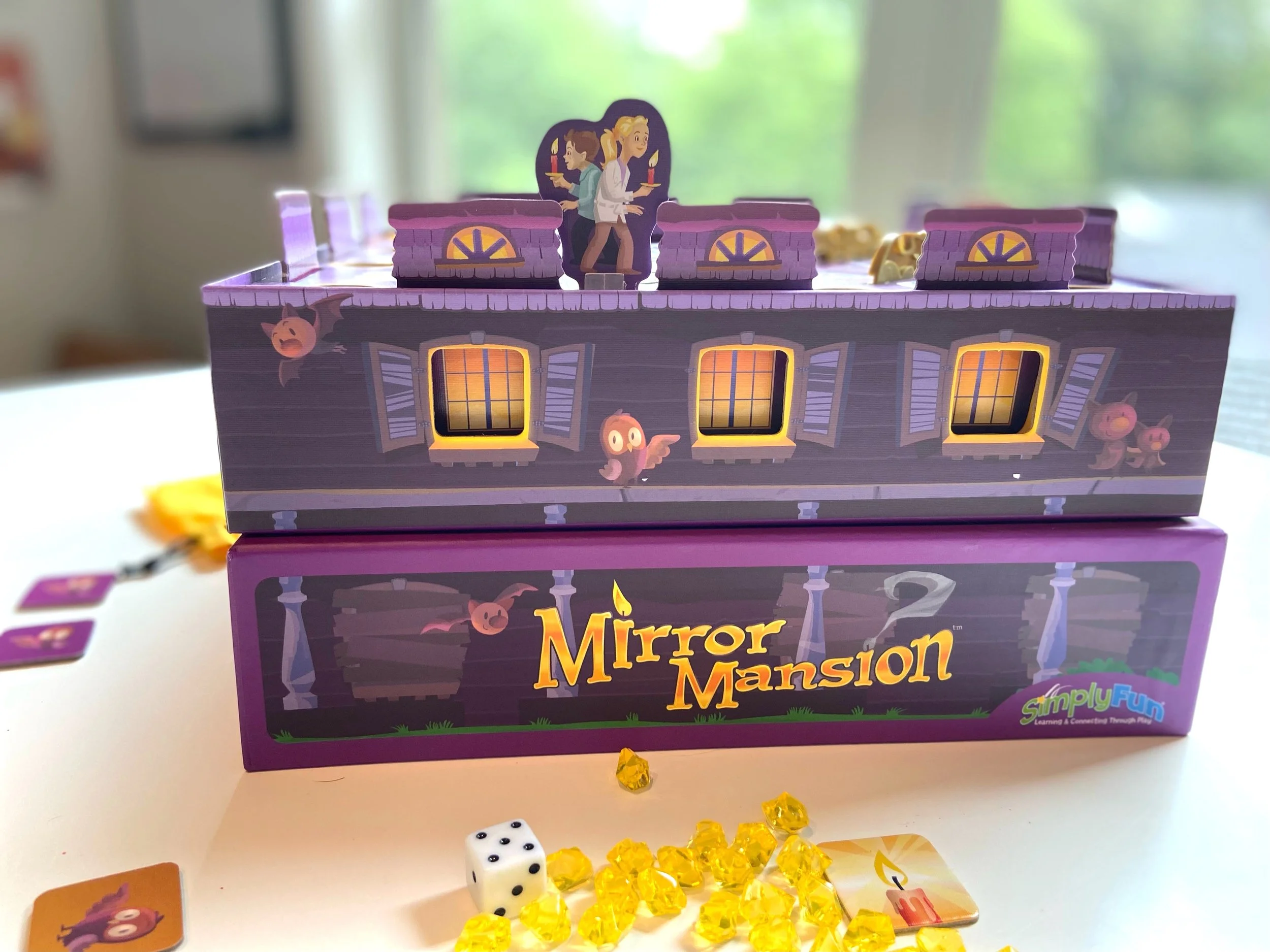Practice Your Alphabet with Rooby's ABCs
I love a good gameschooling opportunity. One of the best perks of playing games with kids is that they learn so many things through osmosis - even if the games aren’t explicitly educational at all. Many board games provide unnoticed opportunities to practice simple math and language skills - not to mention higher level thinking skills like deduction and planning.
But, you must admit, it’s much harder to just casually slip in extra practice for phonics, geography, or geometry, and that’s where educational games come in. There are lots of board games out there designed with education at the forefront, and It’s important to note that they have their time and place as well - especially in gameschooling families and classrooms.
If you’re anything like me, you might have a little bias towards classic fantasy games that are unabashedly noneducational. Perhaps I’m traumatized by poorly thought out educational “games” printed out from Teachers Pay Teachers. But I’m still a very big believer that play is the best way for kids to learn - for many reasons. So games that intentionally allow you to practice certain skills are a valuable resource that should not be taken for granted - especially when they’re designed by world-famous board game designers.
The best board game company out there with a focus on gameschooling is certainly SimplyFun, and until very recently they were only in the direct sales business - with no retail presence at all. I’m personally ecstatic that they’re experimenting with changing their business model for multiple reasons. For one thing, I simply never had any exposure to any of their games at all - which surprised me to realize as someone who writes about family board games.
I’m also extremely grateful that we’ve now been exposed to their games at a time in our kids’ childhoods where we can still take advantage of them. And with the change in their business structure, in a very exciting turn of events, we’re also going to start carrying some of their wonderful games in our bookstore right away - and hopefully help get them in the hands of some local parents and teachers soon.
One of the games we’re going to carry in our store right away is actually this month’s Game of the Month - Rooby’s ABCs. Out of all the SimplyFun games we’re going to carry in the store, I wanted to feature this one because it’s great to play with my daughter - and it’s a great example of taking a simple educational lesson and turning it into a high-quality game.
The quality is immediately apparent because it’s bright, it’s cute, and it has big solid wood tokens for all of the letters of the alphabet. I’m always happy to see solid wood components in kids games, because - like with HABA games - it often means kids will be more than happy to play with the pieces during free play as well. But the quality is also easy to just assume as well, because of the designer’s name on the box. Reiner Knizia is the designer of many famous games - such as the Lord of the Rings board game, and (one of our very favorite games) Whoowasit?.
How to Play Rooby’s ABCs
Rooby’s ABCs is designed for you to practice your alphabet, the sounds the letters make, and various words that begin with each letter. You can practice either your uppercase or lowercase letters by flipping the game boards over, and the wooden letter pieces have uppercase on one side and lowercase on the other. Children will also learn to identify the vowels as special letters as well, because those wooden pieces are very cleverly made orange instead of blue.
The mechanics of the game are simply to draw a letter out of the bag, say its name, turn it correctly to uppercase or lowercase depending on which side you’re playing, place it on the correct tile, and say the name of the picture it’s on. The letters of the alphabet are split onto 5 different boards, and if your letter completes a board you get to take the Rooby tile from that board.
At the end of the game, the player with the most Rooby tiles wins. But I find that this game plays best when you really de-emphasize winning, especially considering you’re playing with kids as young as 3 years old and luck is a very big factor. If nobody makes any mistakes, you simply can’t control which letter you draw from the bag and who finishes the most boards. It may help to think of the game as a fun cooperative activity with a lucky winner as an afterthought.
There is, however, a way to make the game more difficult - which you know I love. Adding difficulty even allowed me to play this game with my 7-year-old and still feel like we’re getting some useful educational benefit out of it. The difficult mode involves covering up all of the consonants on the boards when you play. This way you are required to place your letters based only on the pictures on the board (and their location in the alphabet relative to the uncovered vowels).
Who is Rooby’s ABCs for?
I love to play this game with my daughter, and she asked to play 3 times in a row the first time we played. I thought it would be a useful drill for us considering she’s still working on independent reading and spelling - and still occasionally mixes up a couple of letters and sounds like c or s. It’s a joy to see her prove her mastery of all the letters and sounds with this game. The lesson on vowels and consonants is a good one as well - and the difficult mode was just the icing on the cake for us.
One thing my daughter and I started to do with Rooby’s ABCs that takes the practice to the next level happened by accident, but now I think it’s a great new difficulty level to add. She started placing down letters, and, instead of saying the name of the picture on the board, she would say the name of a friend in school that starts with that letter. Soon we were challenging ourselves by ignoring the pictures entirely and saying a new word that begins with that letter every time.
The recommended age on the box is 3+, and I think that Rooby’s ABCs is a brilliant way to practice the alphabet with little ones. And I can also see it being played in a classroom with up to 4 kids at once - and they might even enjoy the fact that there is a winner at the end. But I think it shows remarkable range that even my 7-year-old enjoys playing with me enough to ask to play multiple times in a row. While she’s still working on mastering reading, I think that opportunities like this to drill and display mastery are both fun and an important source of pride and self confidence that can’t be underestimated at all.
I’m very grateful for the existence of games like this as a dad. When there’s a skill we want to work on, there’s no better way to do it than through play. You just can’t ask for better engagement in the classroom that playing a game. And, if you’re gameschooling at home, you get the added bonus of having an activity to do together and another bonding opportunity - and I can’t so no to that.
You can now find Rooby’s ABCs in our Fayetteville store - or at SimplyFun.com.
Are you a teacher that likes to carry board games in the classroom - or a gameschooling family that uses play to learn? What are some of your favorite gameschooling games? Have you tried Rooby’s ABCs before? Let us know in the comments!
